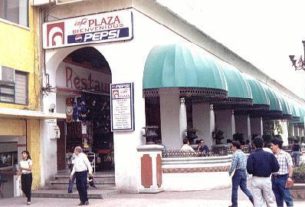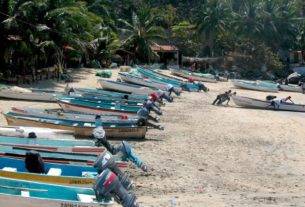As readers of MexConnect are no doubt aware, Mexico has a great variety of tourist attractions of various types. There are the pre-Hispanic ruins, Spanish colonial architecture, churches and cathedrals, government buildings, battlefields, fortresses, houses of famous people, museums, beaches, mountains and other types of natural scenery.
But what about industrial tourism? That’s one you don’t hear about as much.

Nevertheless, industrial development is and has been an important facet of Mexican society and history.
A notable example of such a tourist attraction, which I highly recommend, is found in the northern city of Monterrey at the Parque Fundidora.
Don’t read too fast – that’s F-U-N-D-I-D-O-R-A Park, not FUNDADOR or FUNDADORES.
Fundador means “founder.” So a park named for the fundadores honors the founders of a city. There are various parks in Mexico named after their fundadores, for example in Playa del Carmen, Torreón, Tijuana and others.
Fundidora, on the other hand, means “foundry,” a metallurgical plant which produces cast iron products. That’s the park under discussion in this article.

Formed in 1900, this company started the first iron and steel foundry in Latin America, right here in Monterrey. Its first blast furnace was the first in Latin America, and began operation in 1903.
The company was started by Vicente Ferrera, who had worked in steel foundries in the United States. Ferrera decided that Monterrey would be a good location for one, as there were deposits of iron and coal in the immediate region. Funds from Mexican, French, Spanish and American investors were obtained, and the company was off to a running start.
It was a highly successful company which manufactured iron and steel products, including structural steel, railways, wire rods, corrugated rods, train wheels and other products.
The Monterrey foundry produced steel used in various construction projects in Latin America, including the famous Torre Latinoamericana in Mexico City, which held up well against the 1985 earthquake in that city.
In 1977 the company was nationalized by the Mexican government, and it went bankrupt in 1986. After the company’s property was expropriated in 1988, a public/private partnership transformed it into a public park, opened in 2001 and called Parque Fundidora, “Foundry Park.”
The park comprises 360 acres, with plenty of green space, 23 fountains, two lakes, CINTERMEX (an exhibition hall/convention center), the Parque Fiesta Aventuras amusement park, the Arena Monterrey for concerts and indoor sports, and Auditorio Citibanamex (an indoor amphitheater).

The Paseo Santa Lucia, an artificial river and river walk, is part of the park, and it’s actually possible to walk (or travel by boat) from Parque Fundidora to the downtown Monterrey Macroplaza, or vice-versa.
At the heart of Parque Fundidora are the remains of the Monterrey Foundry. Chief among these attractions is an old blast furnace, “Blast Furnace #3”, where iron was smelted to prepare it for industrial processing. This abandoned facility was repurposed as a museum.
My wife Lilia, our son Raphael, and I visited this museum at the Parque Fundidora and it’s impressive.
It’s not just a museum about industrial metallurgy – it’s a metallurgical facility which became a museum!

In its time, Blast furnace #3 was a state of the art facility. Designed by Arthur G. McKee & Co. of Cleveland, Ohio, it began operation in 1968 and could produce 1500 to 2,000 tons of cast iron daily.
After the company closed down in 1986, Blast Furnace #3 was abandoned until 2005. By that time it was in a deteriorated and dangerous state, so they began a restoration project. In 2007, the restoration project was complete and the museum, known in Spanish as “horno³, ” was open for business. Various other features have been added since.

Blast Furnace #3 Museum contains exhibits about the Monterrey Foundry and metallurgical science in general.
In one part of the museum, visitors in a dark room are able to witness a live demonstration portraying the metallurgical process, which is quite impressive.
Visitors are also permitted to go to the top of the old blast furnace. But how do they get up there?
When the foundry was active there was an inclined conveyor system which would take the iron ore up to the top of the blast furnace. Now, rather than carrying iron ore, it takes tourists to the top.
Museum visitors get into the conveyor and are moved backwards up to the top of the blast furnace. (See photo to left).
When you get to the top, what a great view of the park and city of Monterrey you have!
Even after the museum closes, the elevator continues to function, taking people up to see the nighttime view until 10 p.m.
Monterrey’s Parque Fundidora is a great example of how an abandoned industrial area has been transformed into a multipurpose public park.
The blast furnace museum and other remains of the foundry facilities in the park have preserved part of the industrial heritage of this site which was so important in the history of Monterrey. It’s a splendid example of how this can be done.
If you’re in the city of Monterrey, don’t miss it!


